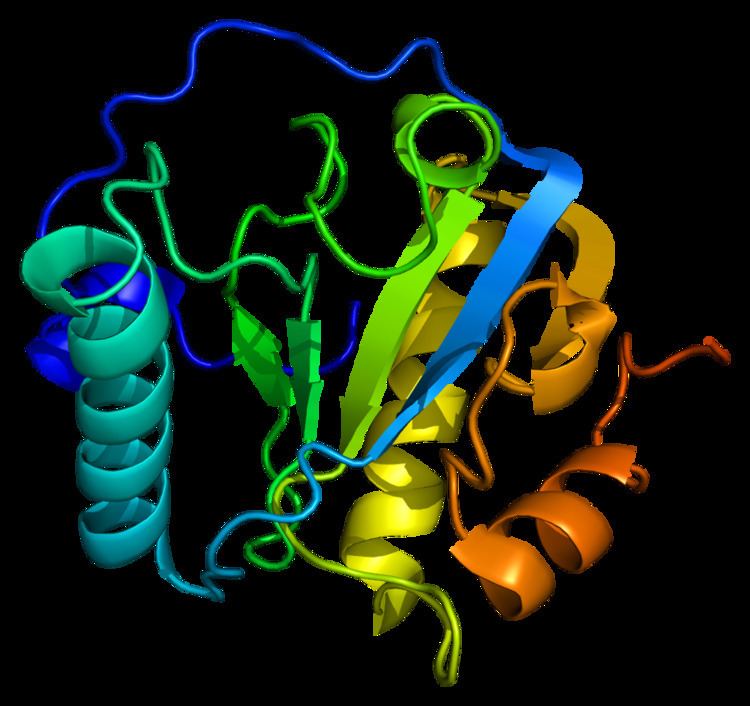Entrez 8993 | Ensembl ENSG00000008438 | |
 | ||
External IDs MGI: 1345092 HomoloGene: 74539 GeneCards: PGLYRP1 | ||
Peptidoglycan recognition protein 1, also known as TAG7, is a protein that in humans is encoded by the PGLYRP1 gene.
Contents
Tissue distribution and secretion
The PGLYRP1 gene is highly expressed in bone marrow, circulating Polymorphonuclear leukocytes (PMLs), and in the corneal epithelium. The PGLYRP1 protein is primarily found in the granules of PMLs.
Structure
As with most PGRPs, PGLYRP1 has one carboxy-terminal type 2 amidase domain (also known as a PGRP domain) and consists of three alpha helices, five beta strands and coils, and has three pairs of conserved cysteins which form three disulphide bonds. PGLYRP1 can form homodimers for its antimicrobial activity, and can complex with HSP70 for its cytotoxic activity.
Function
The PGLYRP1 protein plays an important role in the innate immune response. It is bactericidal against gram-positive bacteria such as S. aureus, S. epidermidis, and L. monocytogenes and generally has proinflammatory effects, inducing TNF-a and IFN-g in many tissues. PGLYRP-1 is also known to form a cytotoxic complex with HSP-70, suggesting it may also have a role in anti-cancer defense. As a pathogen recognition protein with antimicrobial properties, PGLYRP-1 is suspected to play an important role in maintaining the gut microbial flora.
Mechanism of action
As an antimicrobial, the binding of PGLYRP1 to its target does not permeabilize the bacterial cell wall like defensins and other antimicrobial peptides. Instead, PGLYRP1 binding activates a bacterial stress response that causes the bacterium to shut down transcription and translation, and induces oxidative stress. As a cytotoxic agent, the PGLYRP1-HSP70 complex
Possible pathological roll
In humans, Single nuclear polymorphisms of the PGLYRP1 gene have been associated with the development of Ulcerative colitis.
In mice, the lack of PGLYRP1 is associated with increased susceptibility to infectious disease, but also decreased susceptibility to autoimmune disease. The lack of PGLYRP1 was found to have increased susceptibility to corneal infections, reduced corneal wound healing, and increased scarification of the cornea when infected by P. aeruginosa. But PGLYRP-1 deficient mice also had decreased severity of atopic dermatitis and contact dermatitis. and may play a role in the development of asthma.
